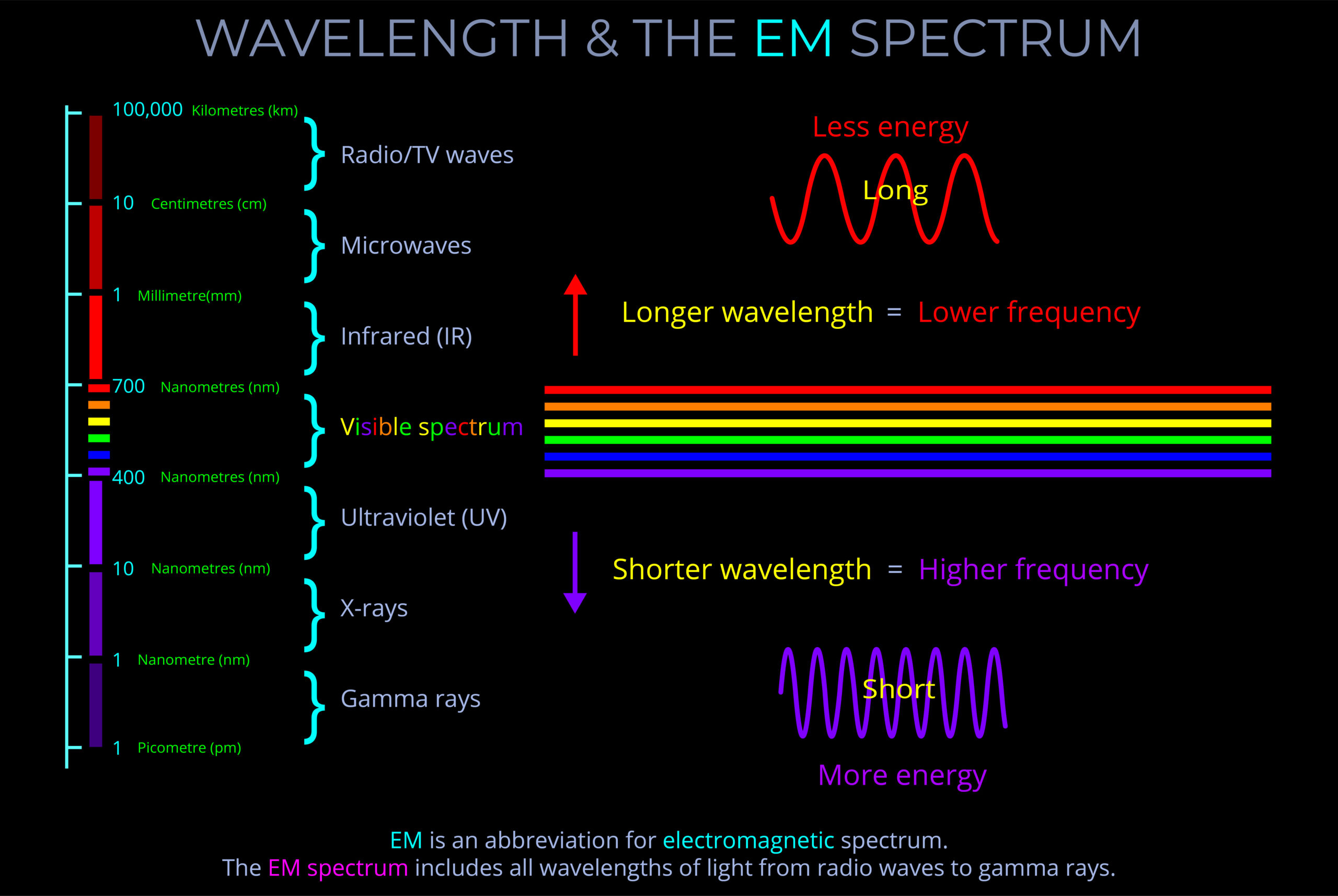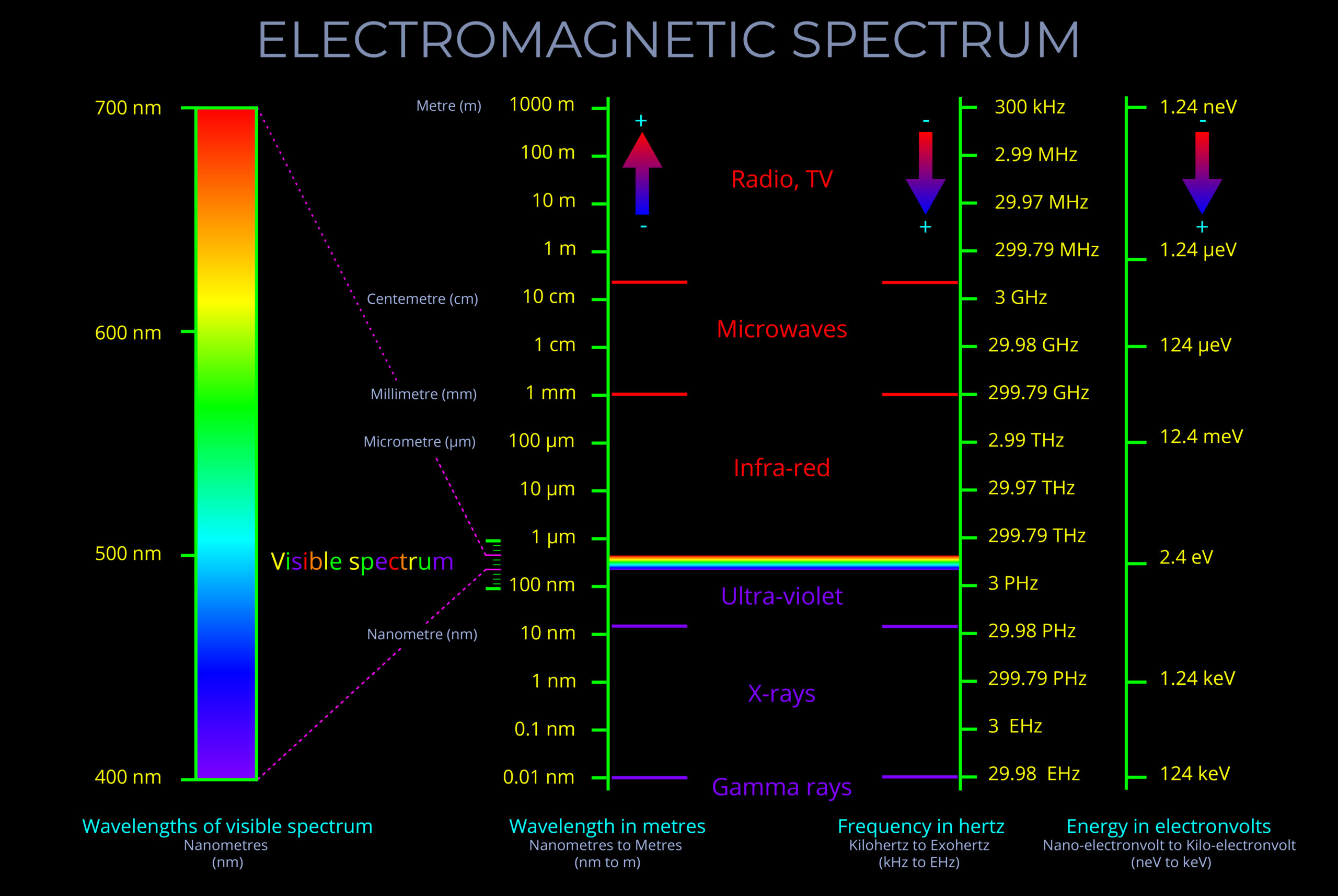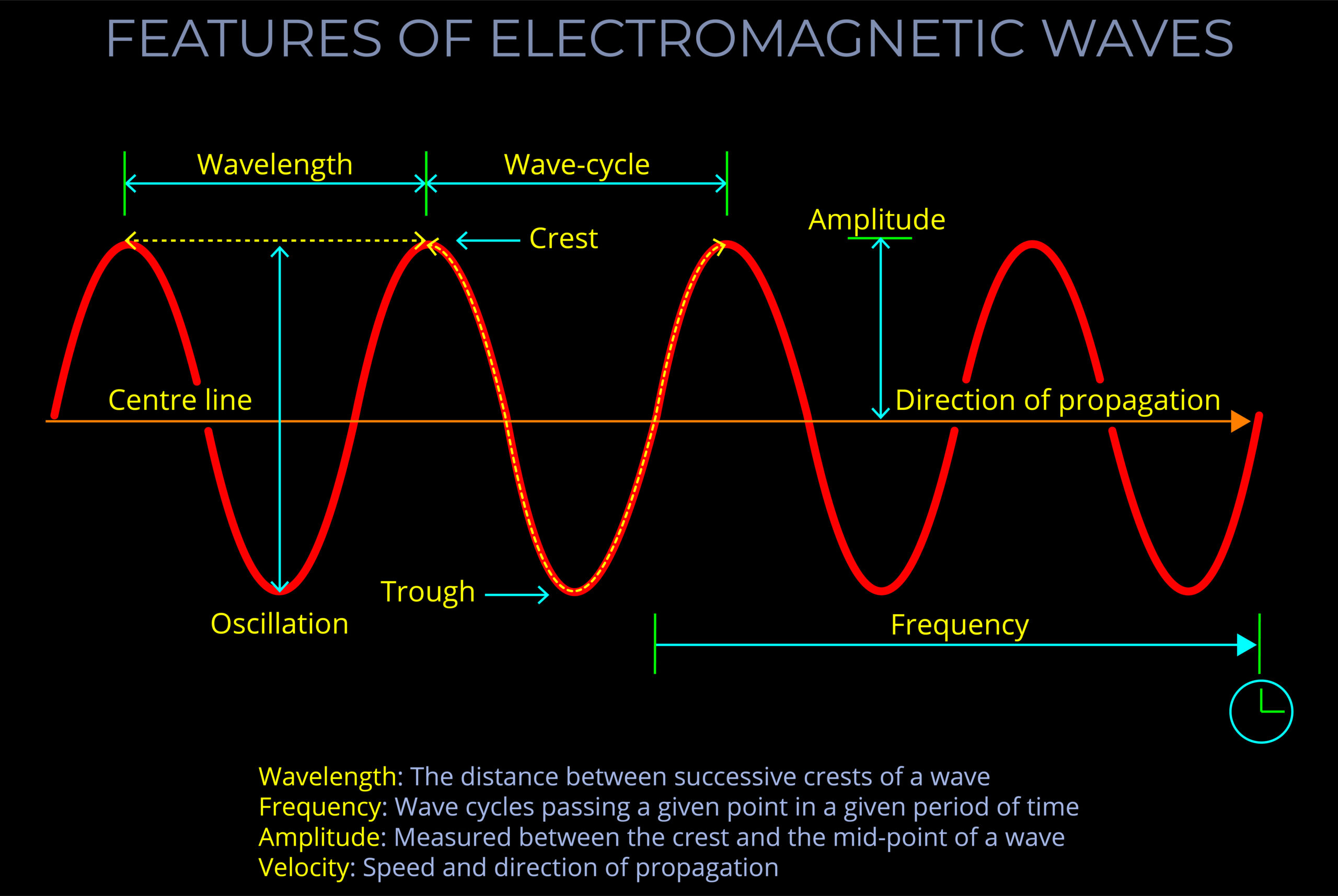A magnetic field is an aspect of the electromagnetic force. It is the interplay between electric and magnetic fields that gives rise to electromagnetic waves, such as visible light, radio waves, and X-rays. Electromagnetic waves travel through space as self-propagating packets of energy known as photons.
- According to Faraday’s law, a changing magnetic field induces an electric field, and conversely, a changing electric field induces a magnetic field.
- This mutual influence between electric and magnetic fields forms the basis of electromagnetic wave propagation, including visible light.
- Photons, the carriers of electromagnetic radiation, embody this duality by comprising self-reinforcing electric and magnetic fields oscillating perpendicular to each other as they propagate through space.
- Magnetic fields emerge in various scenarios within electromagnetism. Whenever electric charges move, whether through a wire carrying a current, charged particles traversing space, or electrons orbiting within atoms, they generate magnetic fields around them.
- Additionally, the acceleration of electric charges results in the creation of a changing electric field, which in turn induces a magnetic field, as described by Faraday’s law.
- To comprehensively understand and predict the behaviour of electric and magnetic fields, physicists employ Maxwell’s equations. These four fundamental equations elegantly encapsulate the principles governing electromagnetism, providing a framework for analysing and manipulating electromagnetic phenomena.
- The oscillation of electromagnetic waves propagating through space represent the transfer of energy. For example, in the case of light waves, the oscillating electric and magnetic fields carry energy from the source (such as the Sun) to the observer.
Transfer of energy between electric and magnetic fields
- The energy carried by electromagnetic waves can oscillate between electric and magnetic fields as the waves propagate through space. However, according to the principle of conservation of energy, the total energy within a closed system remains constant. This means that while energy can transfer between electric and magnetic fields, the overall amount of energy in the system remains unchanged.
- Light Absorption: When light waves encounter a material, such as a solar panel, some of the energy carried by the electromagnetic wave is absorbed. This absorption process involves the transfer of energy from the electromagnetic fields into the electrons of the material, causing them to move and generate an electric current. In this case, the energy initially stored in the electromagnetic fields is converted into electrical energy.
- Microwave Ovens: Microwave ovens utilize electromagnetic waves, specifically microwaves, to heat food. These microwaves contain energy in their electric and magnetic fields. As they pass through the food, the energy is absorbed by water molecules, causing them to vibrate and generate heat. In this process, the energy initially stored in the electromagnetic fields is transferred to the kinetic energy of the molecules, resulting in thermal energy.
- Radio Antennas: When a radio transmitter sends out electromagnetic waves, the energy initially resides in the electric field of the antenna. As the waves propagate through space, the electric and magnetic fields oscillate, carrying energy away from the antenna. At the receiving end, another antenna captures these waves, and the energy is transferred back into the electric field, which can then be converted into a signal by the receiver.
Photon generation
- According to Maxwell’s equations, which describe the behaviour of electric and magnetic fields in classical electromagnetism, accelerating charged particles produce changing electric and magnetic fields. When a charged particle accelerates, it generates a time-varying electric field around it, which in turn creates a time-varying magnetic field.
- These rippling changes in electric and magnetic fields propagate outward from the accelerating charged particle in the form of electromagnetic waves. The energy associated with these waves is quantized into discrete packets called photons, according to the principles of quantum mechanics.
- Electromagnetic radiation encompasses light, radio waves, microwaves, X-rays, and gamma rays.
- For example, in an incandescent light bulb, electrons are heated to a high temperature, leading them to accelerate and to emit photons of visible light.
- Electrons are the predominant type of charged particle that generates photons in light sources. They are found in numerous light sources, including the Sun, light bulbs, and even fireflies.
- The frequency of emitted photons by an electron depends on its energy level. Electrons possessing higher energy emit photons with greater frequencies.
- Photons can be generated by other means besides the acceleration of charged particles. For instance, photons can be produced through nuclear reactions and the decay of radioactive materials.
Photon behaviour
- As mentioned earlier, the acceleration of charged particles results in photons comprised of electric and magnetic fields.
- Both fields exhibit dynamic behaviour, meaning their strength oscillates between maximum and minimum values over time (time-varying fields), and in phase with one another. This creates an oscillating pattern.
- The oscillating wave motions of electric and magnetic fields are always perpendicular to each other. If one is horizontal, the other is vertical so electric and magnetic fields are always at right angles to each other, if one is horizontal then the other is vertical.
- Their wave-like motion are self-propagating disturbances in the electric and magnetic fields, capable of traveling through vacuum without the need for a medium..
- The frequency of the electric and magnetic waves is consistently identical and is determined by the photon’s energy. Higher-energy photons have higher frequencies
Deflection of electromagnetic waves
- Once an electromagnetic wave propagates outward, it cannot be deflected by an external electric or magnetic field. Once an electromagnetic wave radiates outward, it remains unaffected by an external electric or magnetic field.
- This is because electromagnetic waves are massless particles that travel at the speed of light. Their massless nature accounts for their inability to be deflected by external fields.
- However, some exceptions exist to this rule.
- For instance, if an electromagnetic wave passes through an immensely strong magnetic field, it may experience slight deflection.
- Another exception is the deflection of electromagnetic waves by gravitational fields. However, the gravitational deflection of light is minuscule such as in the presence of objects like galaxies and black holes.


